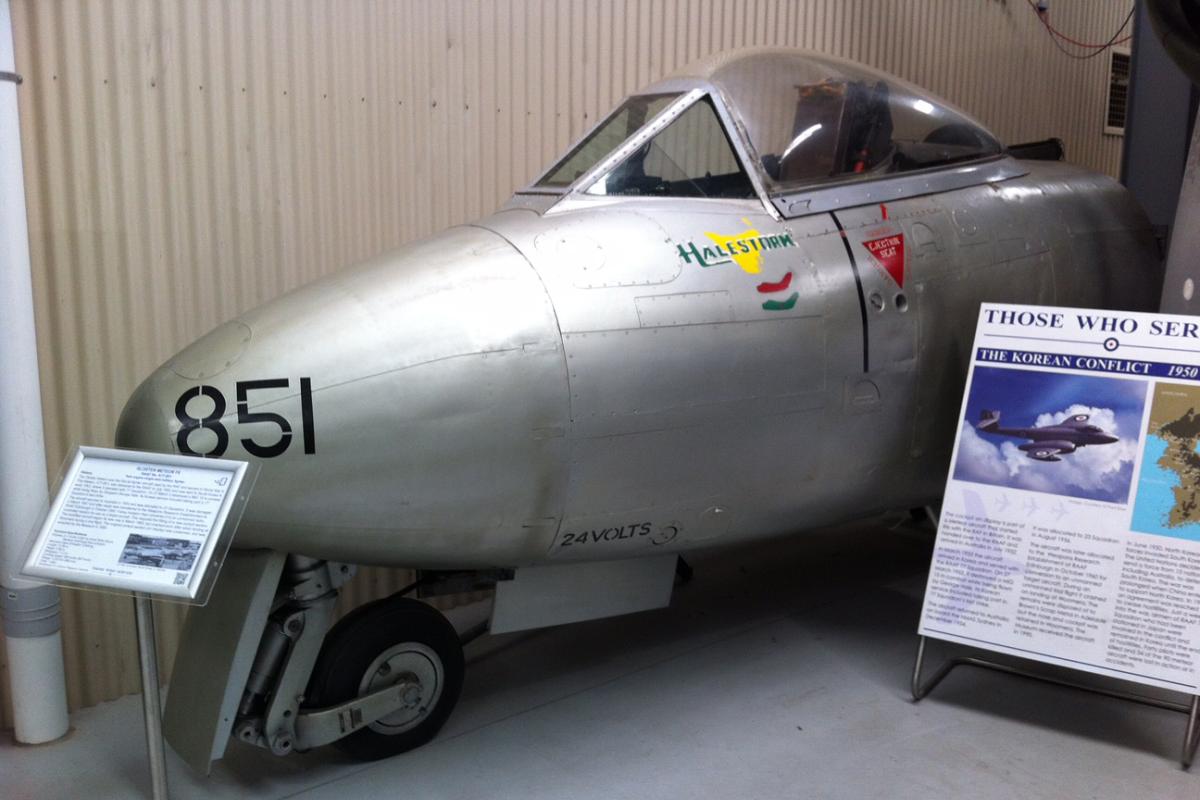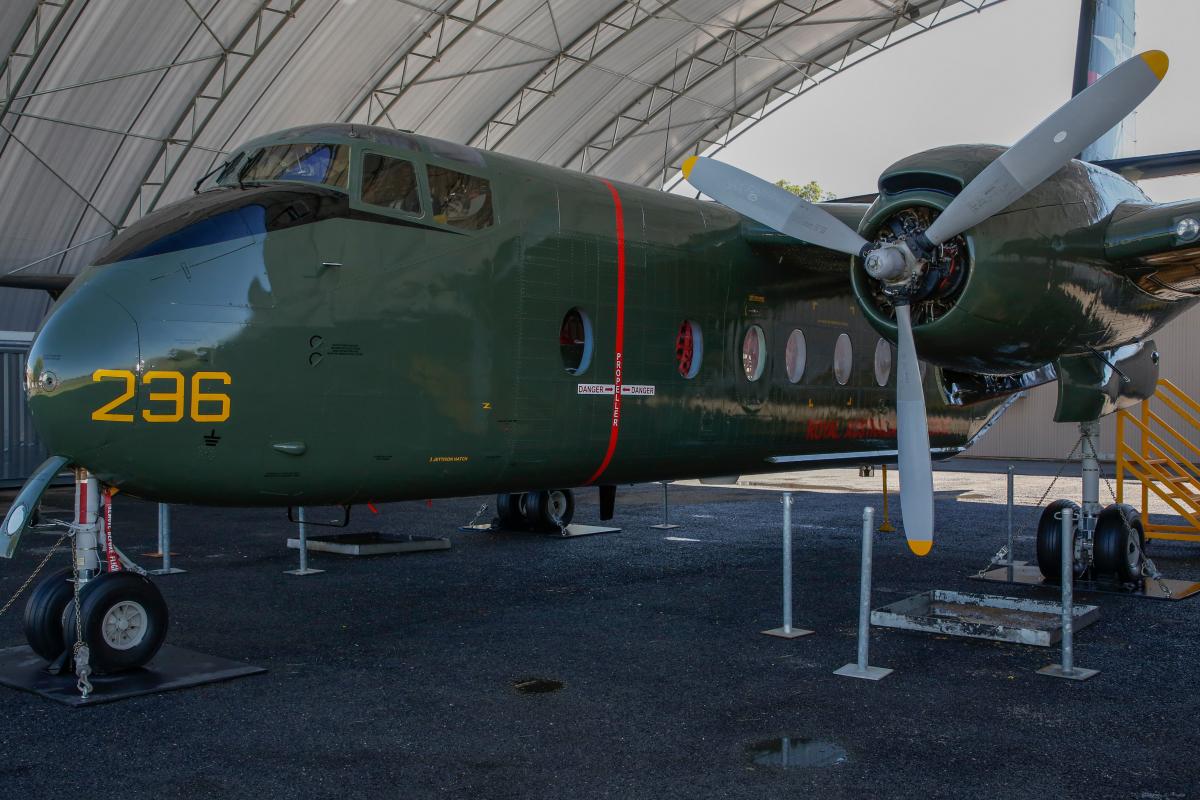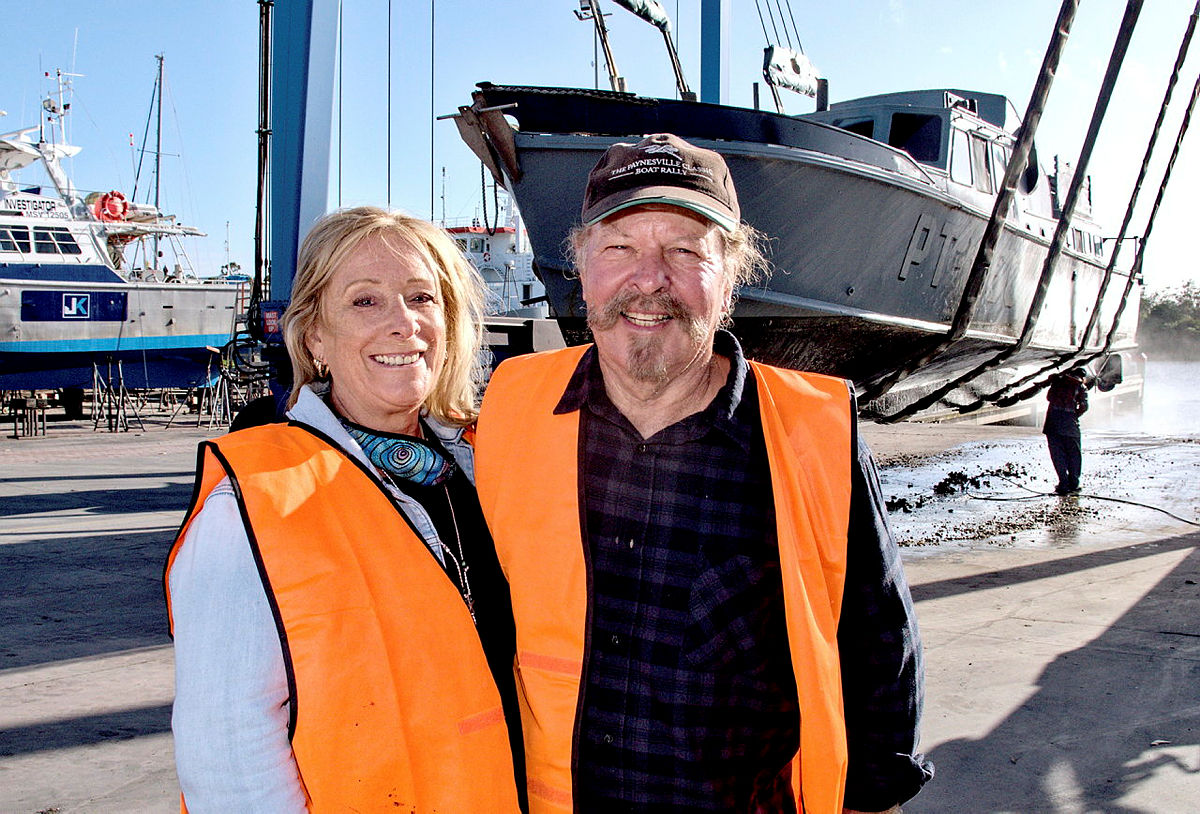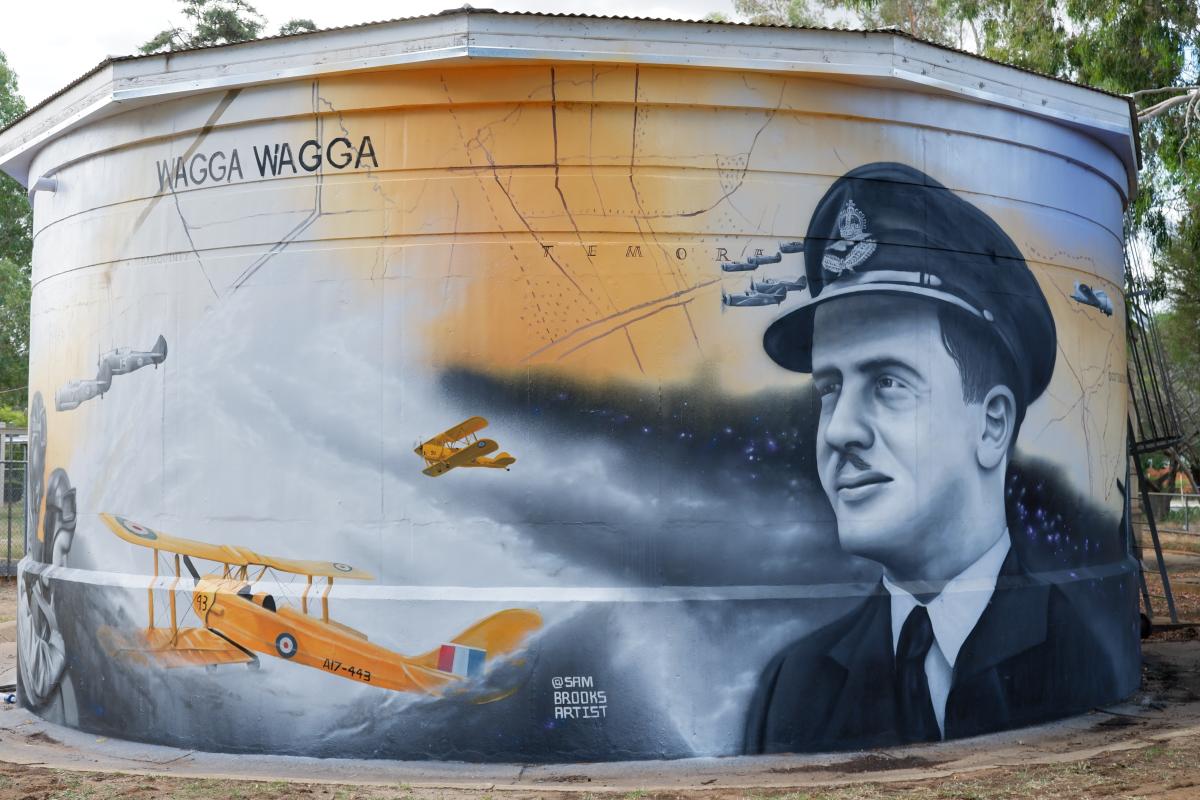RAAF historical stories
The Department of Defence routinely publishes articles of historical interest on its website. The following were produced by the History and Heritage Branch of the Royal Australian Air Force.
Restoration for historical fighter aircraft
The South Australian Aviation Museum (SAAM) has gifted to Air Force the cockpit/forward fuselage of Gloster Meteor A77-851 (aka ‘Halestorm’), the aircraft in which Sergeant George Hale shot down a MiG-15 during the Korean War.
Director-General of Air Force’s History and Heritage Branch, Air Commodore John Meier, said Air Force was pleased to accept this significant historical fighter aircraft from SAAM.
‘This generous donation highlights the great cooperation between Air Force and the Australian aviation museums in general, and SAAM in particular,’ Air Commodore Meier said. ‘History and Heritage Branch now intends to fully restore Halestorm prior to putting it on public display.’
Halestorm not only had a distinguished service career in Korea but was a pioneer aircraft for emerging technologies. Following the war, Air Force converted Halestorm into a drone and used it to conduct aviation trials at Woomera.
Volunteers from SAAM later recovered and refurbished the cockpit/forward fuselage and put it on display for two decades.
President of SAAM Nigel Daw said they were ‘proud to gift Halestorm to Air Force, so even more members of the Australian community will have the opportunity to see this aircraft and learn about its history’.
The History and Heritage Branch expects the Halestorm restoration – which will include merging the cockpit/forward fuselage to another Meteor – to take at least 18 months.

The cockpit/forward fuselage of the Gloster Meteor A77-851 'Halestorm' aircraft to be restored by Air Force's History and Heritage Branch.
Amberley Caribou looks good as new
A newly refurbished DHC-4 Caribou transport aircraft will preserve an important part of Defence history at RAAF Base Amberley.
Following a seven-month restoration process, the Caribou (serial A4-236) was ‘unveiled’ on 6 April at Amberley Aviation Heritage Centre (AAHC), where it will be on static display during public open days.
Air Force operated a fleet of 29 Caribou from 1964 to 2009, with the aircraft – popularly known as ‘the Gravel Truck’ – renowned for its ability to operate from improvised runways and playing fields.
Caribou were a common site at RAAF Base Amberley when No. 38 Squadron’s fleet was based there from 1993 to 2007.
When the last remaining aircraft were retired in 2009, many surviving Caribou made their way into museums and heritage centres, including the Australian War Memorial and RAAF Museum at Point Cook.
Caribou A4-236 was handed over to the AAHC.
Warrant Officer Mike Downs led the team to refurbish A4-236, having worked on the Caribou at No. 38 Squadron in 2009.
‘For a number of years the aircraft was left unattended before being transferred to the custody of the AAHC,’ he said.
‘In the ensuing years, the aircraft exterior paint finish deteriorated to the point where bare metal was visible and the aircraft was deemed as sub-standard for an AAHC static display.’
Caribou A4-236 began its Air Force service with a marathon journey in August 1965 from the de Havilland Canada factory in Toronto to its new home at RAAF Base Richmond.
The 16,500-kilometre journey was completed in several legs at a stately cruise speed of 290km/h, with a few tense moments between Hawaii and Kiribati when a propeller fault forced the crew to shut down an engine.
In Air Force service, it provided airlift during the 1990 New South Wales floods, and peacekeeping in Timor-Leste (East Timor) and the Solomon Islands.
When A4-236 arrived at RAAF Base Amberley in November 2009, only cursory effort was made to preserve or protect the aircraft while it was parked in the elements.
In recent years, Air Force's History & Heritage Branch has initiated a project to restore many of the retired aircraft at RAAF bases around Australia.
Read the full article on the Defence website.

Air Force personnel from the History and Heritage Branch restored de Havilland DHC-4 Caribou A4-236, which is now on display at the Amberley Aviation Heritage Centre, RAAF Base Amberley, Queensland. Photo: Sergeant Peter Borys
Historic Air Force boat to be restored
Air Force has been gifted the only remaining Second World War RAAF rescue launch for the Air Force Heritage Collection.
The boat was transported in February by road from Lakes Entrance, Victoria, to the History and Heritage facility at Spotswood, Victoria.
Senior Air Force Curator, History and Heritage – Air Force, David Gardner, accepted the donation from its owner, Howard ‘Harry’ Bowman, on behalf of Air Force.
The restoration of boat O2-06 will be supported by royalties totalling more than $136,000 from Air Force Centenary licensed merchandise sales.
O2-06 is one of 15 O2-class vessels constructed for the RAAF in 1941 at Fishermans Bend in Melbourne by Thornycroft/Halversen, and was in service as a search and rescue (SAR) boat during the war, in the Gippsland Lakes, East Sale and Point Cook.
Air Force operated boats from 1921 to 1993, and the fleet of various classes of boats peaked at 1,300 during the Second World War: 600 powered craft and 700 unpowered.
History and Heritage Branch will restore the boat to its original livery before putting it on permanent display at the RAAF Museum at Point Cook.
Read the full article on the Defence website.

Previous owners of the Royal Australian Air Force search and rescue boat O2-06, Howard “Harry” Bowman and Karen Letch, in front of the boat they've donated to the Air Force Heritage Collection.
Wagga honours Empire Air Training role
A memorial honouring the Empire Air Training Scheme (EATS) is nearing completion at the entrance to RAAF Base Wagga, in recognition of the contribution to the RAAF by many local communities.
The new memorial located within RAAF Base Wagga’s Heritage Precinct honours the local towns and aviators who were part of the scheme between 1940 and 1945. The memorial at the base now forms another of the permanent legacies created during the Centenary of Air Force program (AF2021).
The EATS memorial highlights the significant role that regional towns played in support of the RAAF during the Second World War.
RAAF Base Wagga AF2021 base liaison officer Wing Commander Tony Wennerbom said the memorial was commissioned in recognition of the Centenary of Air Force and was designed in a way that fulfilled the expectation required from AF2021.
‘Particularly, engaging with the community and veterans created ownership and pride amongst locals through highlighting the regional contribution the Riverina played in supporting the war effort, and finally inspiring a younger generation,’ Wing Commander Tony Wennerbom said.
RAAF Base Wagga commissioned mural artist Sam Brooks, and collaborated with the local RSL sub-branch and its veterans to deliver the project.
‘The role of EATS was a critically important project for RAAF Base Wagga to include in Air Force’s Centenary year,’ Wing Commander Wennerbom said. ‘It represented the biggest growth period in its 100-year history. It also represented the single largest combined undertaking of the Commonwealth air forces during World War II and remains to this day an incredible example of a coordinated global wartime mobilisation.’
The official opening of the EATS memorial is planned for July 1, 2022, marking the 82nd birthday of RAAF Base Wagga’s formation.
Read the full article on the Defence website.

Air Force personnel who trained as part of the Empire Air Training Scheme in World War II have been depicted on murals commissioned as part of the Air Force 2021 Centenary at RAAF Base Wagga. Photo: Wing Commander Tony Wennerbom
